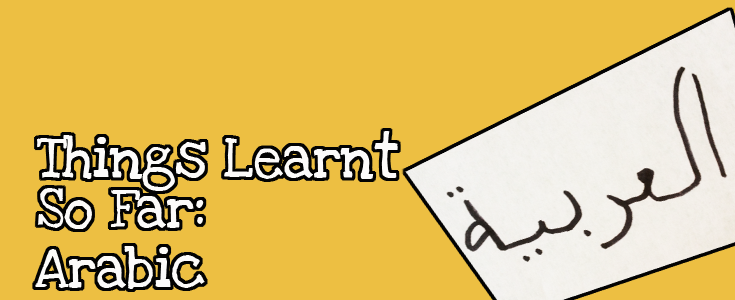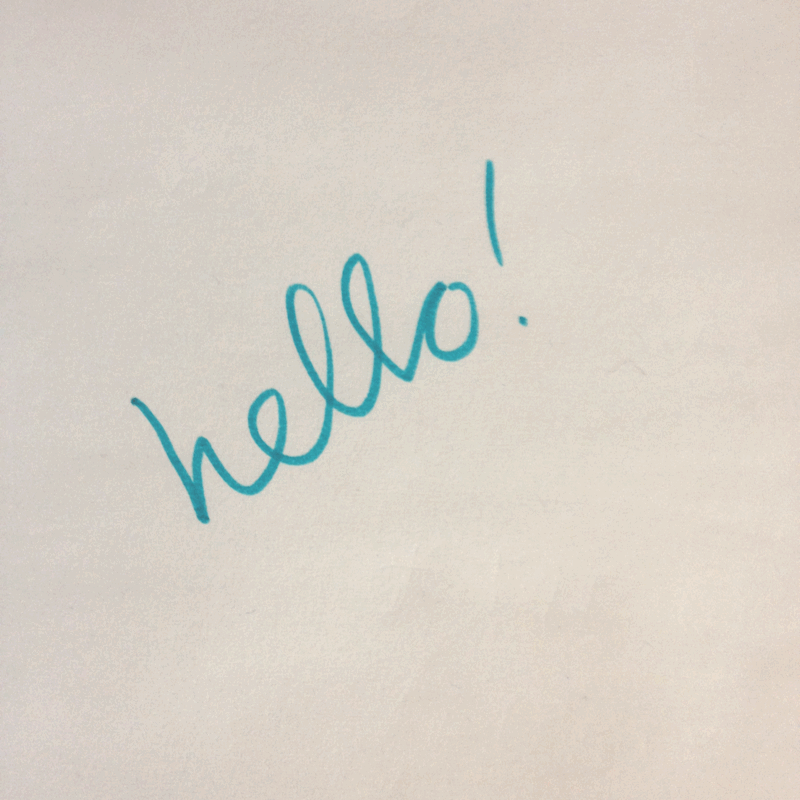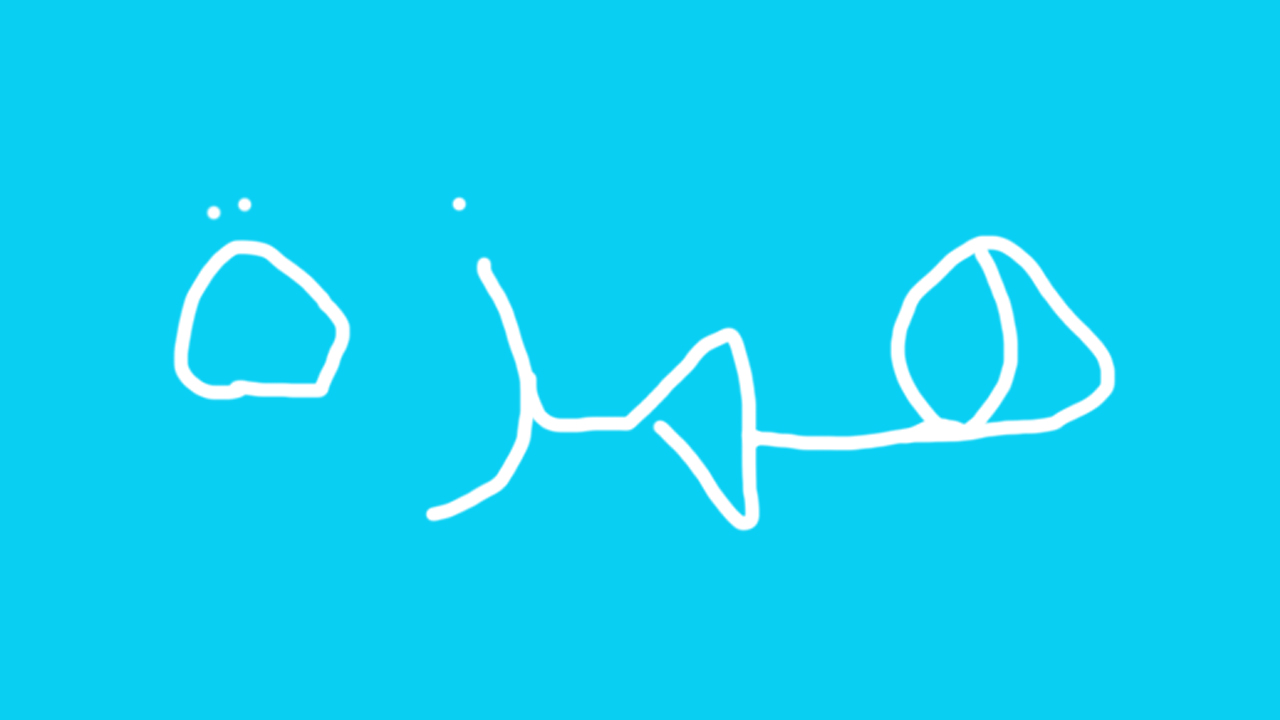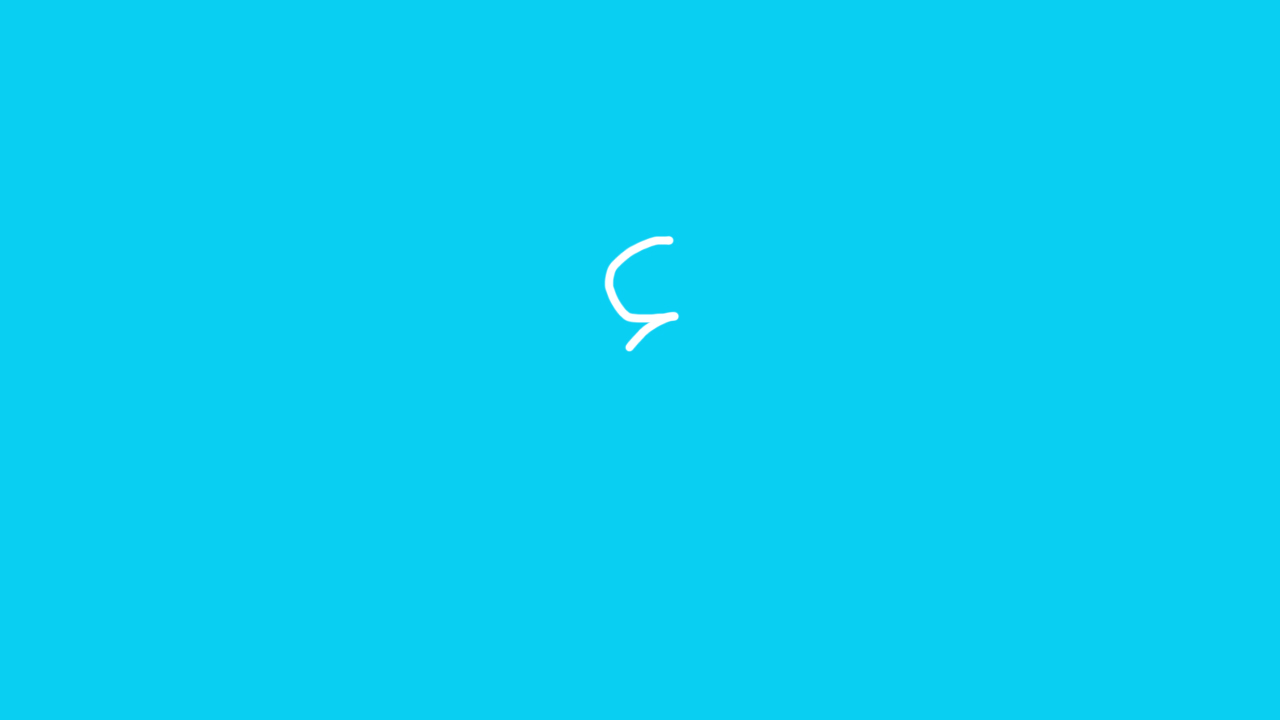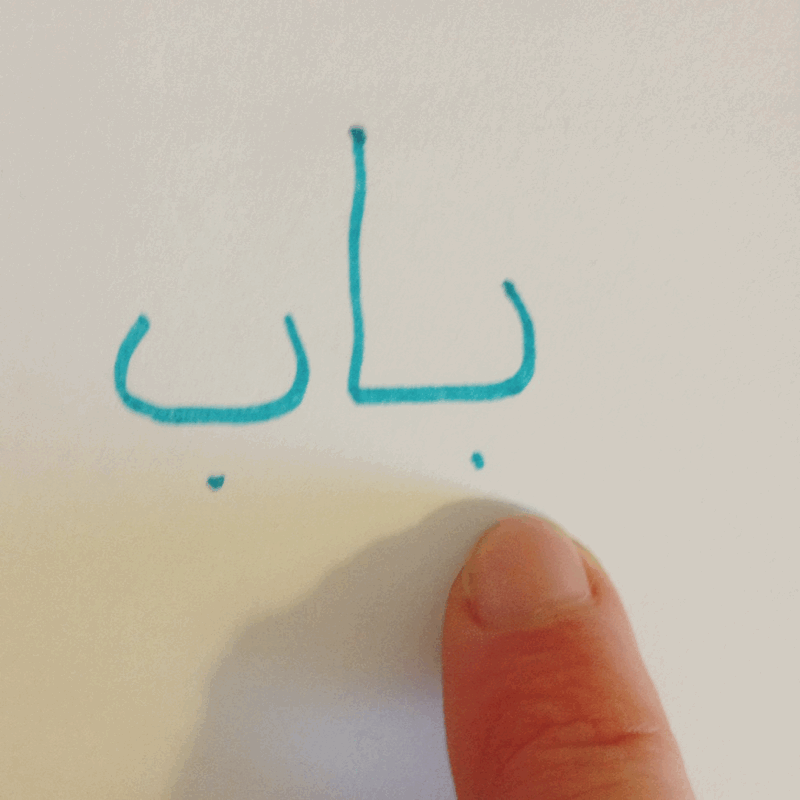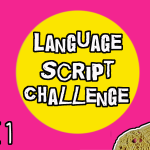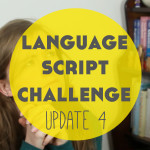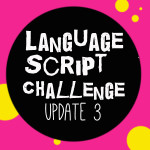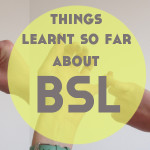January 21st, 2015
Things I’ve Learnt About Arabic So Far
One thing I love about blogging is that it gives me the chance to document my progress as it happens. That’s exactly what I want to do with this post. My Language Script Challenge has begun and this week I’m starting my forth script (Thai!). I’m on track, Jack. And I’m making up new expressions like there’s no mañana. Along the way, I’m learning little nuggets of language joy that I just can’t help but share with you! I figured the best way to do this would be language by language so let’s start today with Arabic.
What I already knew
It only seems fair that I start with what I already knew before beginning to learn the Arabic script. I knew that Arabic is an alphabet but didn’t know how many letters it has. I knew that Arabic was always written joined up, or in cursive. I knew that Arabic is written from right to left. This makes me wonder, historically, were there more right handed people in places where writing left to right happened and more left handed people in places where writing is right to left? I’m thinking for, what I believe the technical term to be, smudging avoidance. I don’t know the answer to that one.
It’s not just Arabic
So, before I even wrote the list of scripts I wanted to learn, I knew that the Arabic script is used to write other languages than Arabic. The one that jumps to mind is Urdu. Mainly because my library had a sale and I have Teach Yourself Urdu on my shelf. I can’t resist. I’ve also taught people from the Middle East before who spoke an array of languages that used the Arabic script. Anyway, in doing a little research, which I think of as a rather important side note to this whole challenge, I have to be honest that I’ve been amazed by the quantity of languages that are written in the Arabic script. I also learnt that it’s the forth most used writing system in the world (after Latin, Chinese, and Devangari). That is a little bit amazing to say the least.
Surprising similarities with the Latin alphabet
Not long before getting started with learning the Arabic script, I was putting together this video when I found out that Arabic, and Hebrew, have their roots in the same alphabet as the Latin alphabet. I didn’t think much of this at first. Arabic has always looked like one of the hardest scripts to read to me and I couldn’t see ANY similarities so figured this same alphabet thing must go waaay back. Which it does. But it also turns out that although we may not see much similarity between the Arabic and Latin script, the order of letters does bear some resemblance. There’s even more similarities in the order of sounds between Arabic and Hebrew – but that’s another blog post.
A significant lack of vowels
Ok, not strictly true, but when it comes to the Arabic alphabet, there’s only three vowels included. Arabic has what’s called short vowels, which are added above and below consonant letters. I’m pretty sure I read somewhere that these short vowels aren’t often added in everyday writing. (Ds dis mn Arbk invntd txt spk?) I find this absolutely amazing. It reminds me of that study that says that no mteatr waht oerdr lteerts are in, if the frsit and lsat are trhee we can raed waht’s bieng siad. Phew, typing that way is hard. But looking back, I can read it. There must be some of the same science applicable to reading Arabic, I guess?
Little dots change a lot
Take…
On its own, it means nothing in Arabic other than a smiley face with no eyes, but just by adding a dot here…
We get ‘b’. Let’s move it on top and add a friend…
Now we have ‘t’. But because three is the magic number…
Ladies and gentlemen, say hello to ‘th’.
Dots did that! Dots changed the letter, the sound, and, in a bigger context, the word. This is making learning the alphabet a lot more enjoyable than I imagined. These shapes are also next to each other in the alphabet, so it’s easy to group letters and learn it chunk by chunk. Isn’t chunk a gross word? Chun…blurrrrgh.
Stop in the name of the glottal stop
Glottal stop is one of my favourite language term names. Another is interrobang?! Arabic has its very own glottal stop called hamza or, if you’ll allow me one more shot at my shaky Arabic writing practise in this post…
Which when written with other letters looks like this…
If you’d like an English example of a glottal stop, try saying the words ‘water’, ‘bottle’, or ‘butter’. Whether or not a glottal stop is in the middle – in our examples on the ‘t/tt’ – depends on accents and dialects. One of the reasons I love glottal stops so much is because where I live we do this ALL THE TIME. Just can’t enough of that glottal stop stuff. Even the word ‘glottal’ has a glottal stop. Geniously named.
I can read it joined up! (ish)
I am by no means a pro. Or even a semi-pro. And probably not even a semi-semi-pro. But, I CAN read (mostly single) words and say them out loud at this stage. This is something I’m so proud of. A few weeks ago, Arabic text was a complete mystery to me, and now, albeit very limited, I can make some sort of sense of it. This is exactly why I decided to do this Language Script Challenge – to open up my mind and read and understand things that have always been out of my reach.
I think my experience so far with Arabic has highlighted to me the purpose of this challenge and inspired me to keep going. It’s definitely not something that will be left behind. I do hope to engage more with the script – who knows, maybe I’ll even go on to learn Arabic at some point! Spoiler alert: I can see myself ending every one of these posts about every script with that line.
Also, just to mention – This post is merely the thoughts of someone in the early stages of learning the Arabic script. I’ve done my best to make the information in this post as accurate as possible. However, if you’re after more info on Arabic from someone in the know, check out this guest post by Donovan Nagel. His blog is right here too.
Learn more Arabic!
If you enjoyed this post and you’re learning Arabic, you may well be interested in Talk in Arabic by a team of native speakers and Donovan Nagel of the blog The Mezzofanti Guild. They specialise in bringing you materials with a variety of Arabic dialects. Check it out here!

